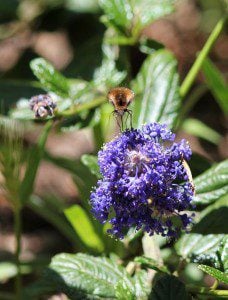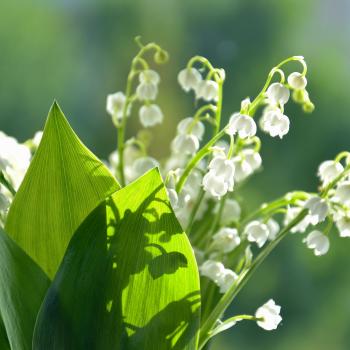[Editor’s Note: Please welcome Anne Duthers, a new contributor on the Agora. This column, Adventures in Wortcunning, will be published on alternate Fridays. Subscription links are at the bottom of the post. Welcome, Anne!]
It began with me barefoot on a lawn in the suburbs of California’s Central Valley. It was summer, and therefore, redundantly, hot. I wore little besides, well, a diaper actually. From all accounts it was a happy day, but what I remember is the grass. Between my toes and in my chubby hands: then grab, yank, and in the mouth, much to Mom’s alarm. As natural to me as falling down a rabbit hole.

And, thus began my love affair with Nature in all her green glory. Oh yes, mud pies were an important part of this journey. As were afternoon hours of insect observation — a fascination of the creepy-crawliest kind! Getting lost got me in trouble in the expanses of hillside shrubbery that pass for wilderness to a kid in San Francisco. Lost, not in location, but because I was busy with the plants I found. And in trouble as in, “Where the heck were you? It’s dark already! You’re grounded forever!”
It was in those days I was introduced to Ceanothus, aka Wild Lilac, or Indian Soap Bush. Pick a ripe blossom (ask the plant first, of course) and rub the flower head, called a panicle, briskly between your palms… See? Soap! There are over 2,500 varieties of this North American Native, ranging from sea to shining sea. In any location, dozens of indigenous animals, birds, and insects depend on this plant for survival.
They are a drought tolerant plant that explodes for about 3 weeks each spring in exuberant calliope of panicle blossoms ranging from white to pink, light purple to deep blue. The scent is heady, too, but all that fun doesn’t last long. Then dark, glossy leaves wait thick and quiet providing wildlife habitat until nutlike seeds appear later in summer, feeding wrens, cottontail bunnies, and many other small animals and birds. Honeybees and Butterflies love this plant!
Don’t be surprised to find an actual rabbit hole at the base of a wild lilac, too. Ceanothus can grow quite old and large. Even, or perhaps especially, some ground-cover varieties require the wind-sheer of a coastal cliff to keep them below shoulder height. Most other varieties of Wild Lilac will grow into the sort of shrub most folks call a tree, at 15 to 30 feet tall. The wood of the plant is very hard and branches grow low and thick around a central stalk. Established plants can grow for 150 years or more in the wild.
You may find this plant at a local garden center in a plastic bucket. If you decide to get to know one another better and take the plant home, please don’t try to grow this wild thing in a container. It requires lots of toe-room for the roots to grow far and wide in their pre-programmed search for water. Yet, despite its wild ways (or maybe because of them), you will find Ceanothus very drought tolerant after that first, root growing summer.
Very much a wild plant, it does not like extra water at all, so no nearby sprinklers please! Well-drained soil is a must. And keep those pruners in your pocket – Ceanothus resents pruning in any fashion. If you must trim a branch, cut it all the way back to the main stalk. It is much better, however, to place this beauty in an untamed and showy corner of the landscape where it will have plenty of room to thrive under your benign neglect. You have a wild corner, right? A place you never touch in the garden… a place for the fairies to play? (Hint: A Northern corner is ideal for this purpose.)
Use the leaves and blossoms of the Indian Soap Bush in an infusion for washing skin, especially good for facial blemishes, and as a hair rinse. Or, make a leaf and twig tea to wash babies and those with sensitive skin. The wood will make a good wand for use in transitions and things that generally need cleaning up. Being old, wild and native, connected with babies, and clearing things up, you may also recognize it as a powerful fairy plant. Rabbit hole, indeed.
Remember always to use your manners when wildcrafting or harvesting plants in the wild. Use these simple guides to gain good sympathy with the plant and its Deva (fairy spirit). Do not use any part of the plant without permission from the plant or her Deva, however this is easy to gain if the plant is approached with an open heart and honest connection. Tell the plant of your intentions, sing to it a song of praise and pleasure, ask the plant to help you with your need, and then leave an offering (a bit of colored ribbon or a coin is traditional) as a thank you.
In this way you may establish a relationship of mutual respect with your garden. Careful, from here gardening becomes almost as easy as falling down. You may soon find yourself making mud pies and following rabbit holes to adventure.
Adventures in Wortcunning is published on alternate Fridays. Subscribe via RSS or e-mail.













